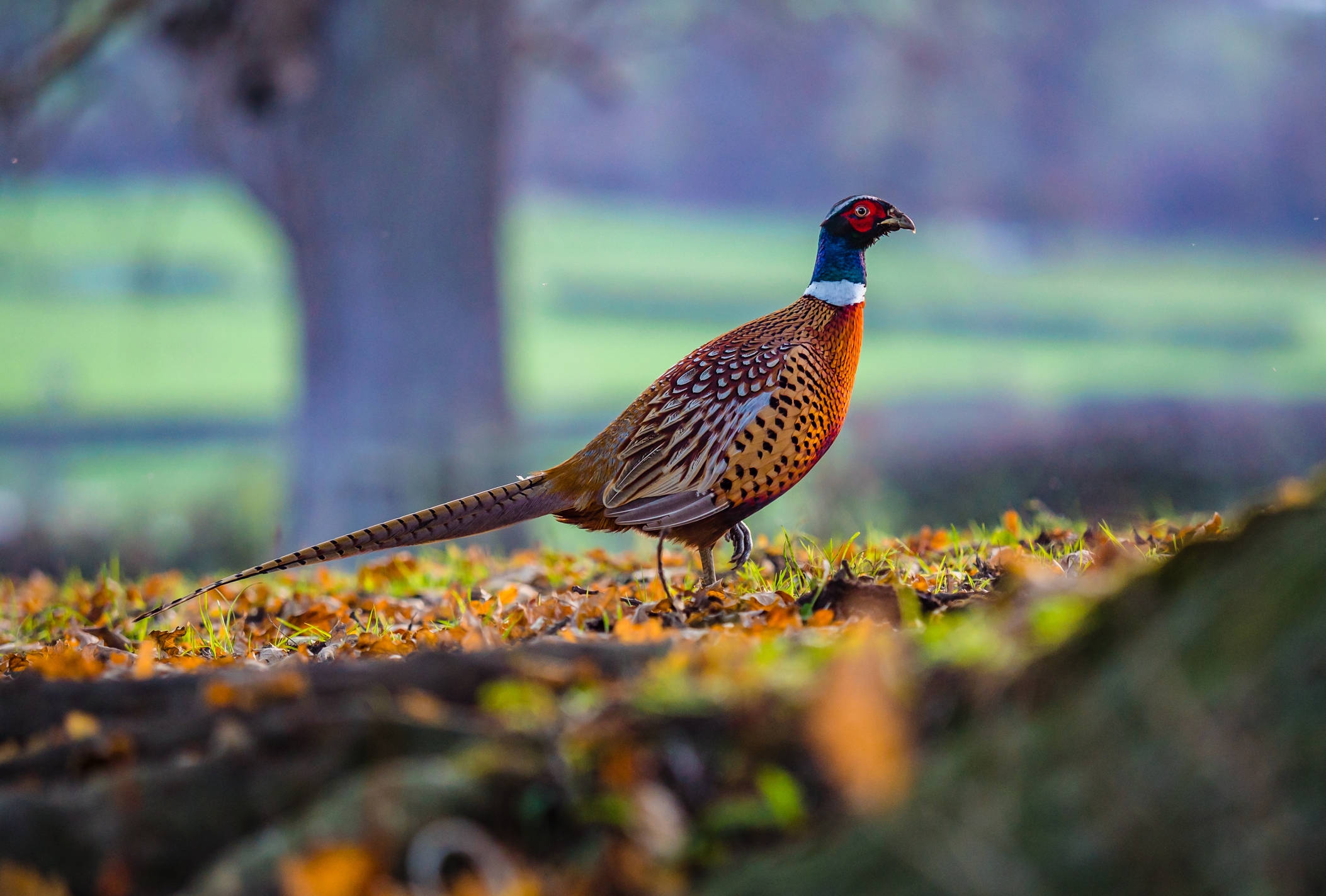Pheasant
Ring-necked pheasants are beautiful birds that were introduced to Alberta in the early 1900s by newly arrived immigrants who wanted to be able to hunt them as they did back home.
Pheasant meat is low in fat and high in protein, making it a healthier option than other poultry. Its wild diet of seeds, shoots, fruits, insects and roots gives the meat a unique flavour that is akin to a richer version of chicken.

About
A popular species to hunt, ring-necked pheasants are a lowland species that does most of its travelling on the ground. They prefer habitats 'on the edge'; that is, on the border of a farmed field and a dense forest, wetlands, or wild grasslands. During the winter, they rely primarily on leftover cereal grains that remain in farmed fields, while their summer months are spent foraging plants, insects, and occasionally small rodents or amphibians.
History
An introduced species to Alberta, ring-necked pheasants are actually native to China and Japan. They were also introduced hundreds of years ago to the UK, which is likely where Alberta's population came from.
Now, Alberta raises and releases almost 27 thousand pheasants each year to sustain the population, which remains abundant and a popular gamebird species.
Ways To Cook
As pheasant meat is higher in protein and collagen, it can be tough if not prepared correctly. Typically, meat should be brined to maintain moisture and then cooked low-and-slow to tenderize and bring out the richer flavours.
Some Of Our Favourite Videos
Alberta Pheasant Producers
Rocky Mountain Game Meats
About this producerFoods from this producer:
-
- Domesticated
- Fur
Beef
-
- Domesticated
- Feather
Chicken
-
- Domesticated
- Fur
Lamb
-
- Domesticated
- Fur
Pork
-
- Wild Game
- Fur
Bison
-
- Wild Game
- Fur
Venison
-
- Wild Game
- Fur
Wild Boar
-
- Wild Game
- Fur
Pronghorn
-
- Wild Game
- Fur
Rabbit
-
- Wild Game
- Feather
Duck
-
- Wild Game
- Feather
Partridge
-
- Wild Game
- Feather
Pheasant
-
- Domesticated
- Feather
Quail
